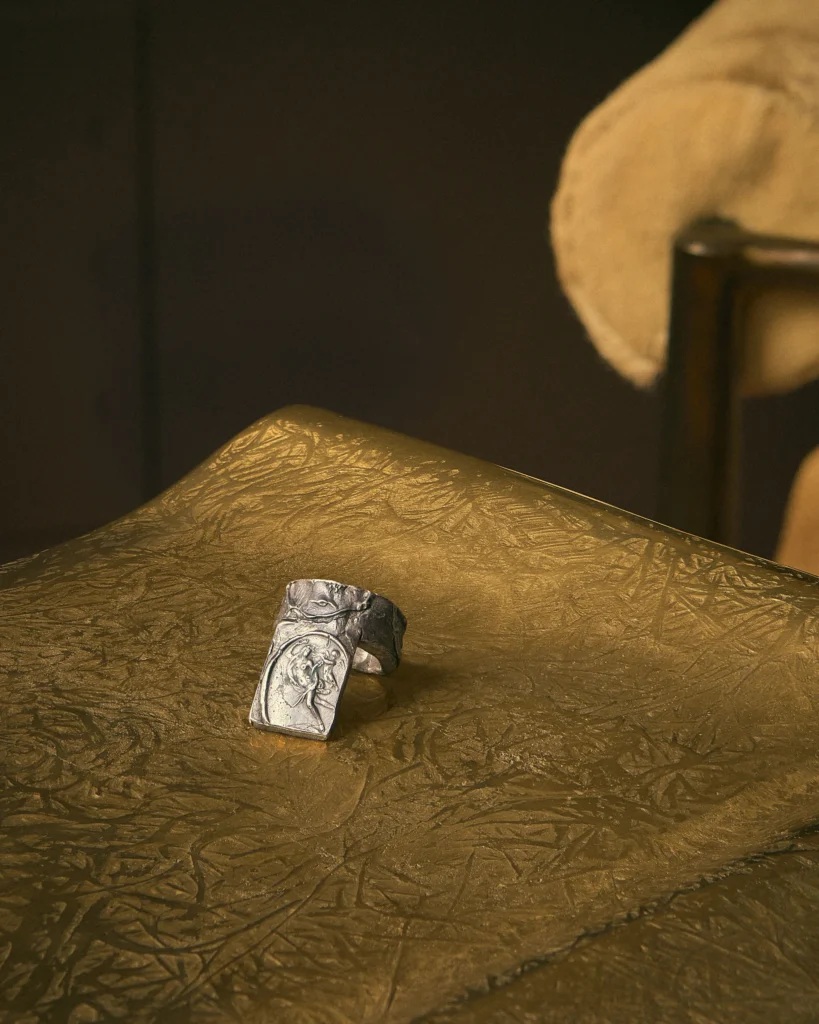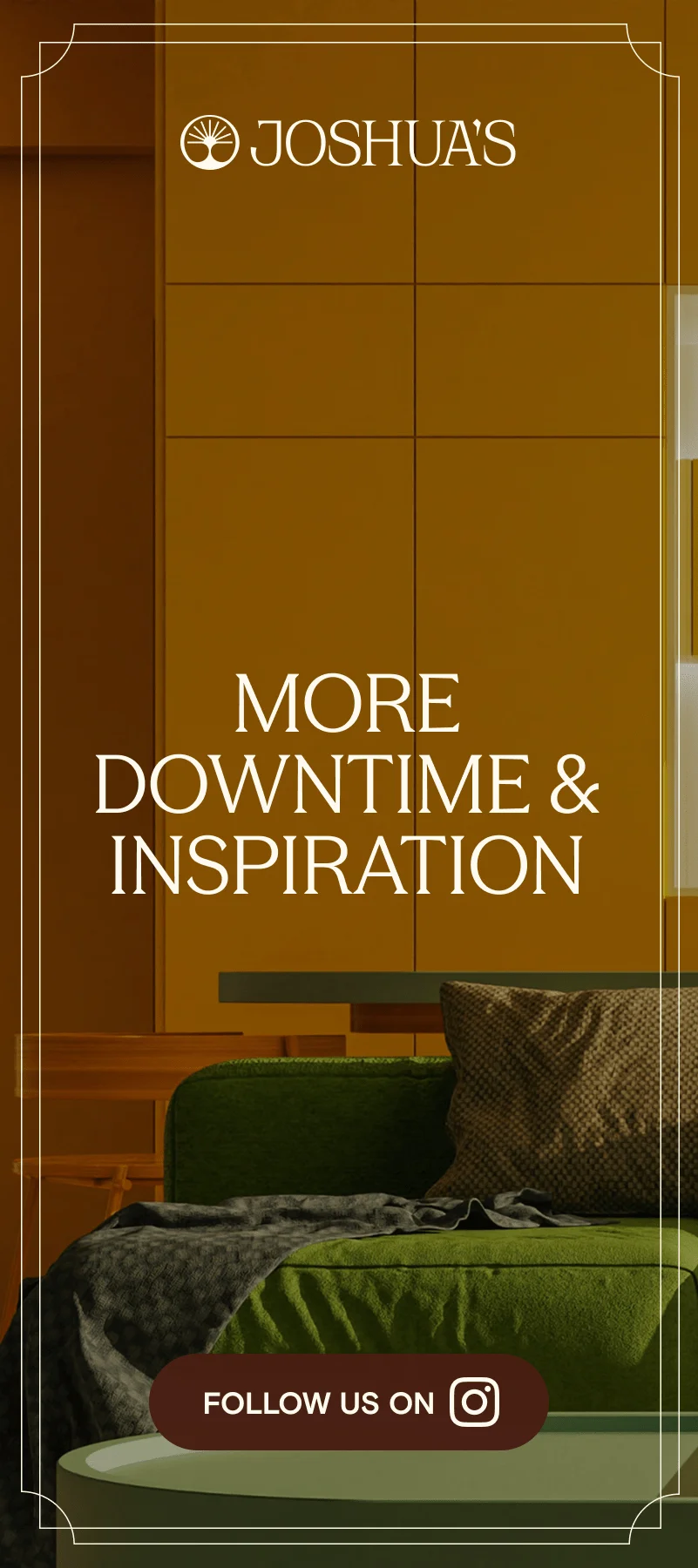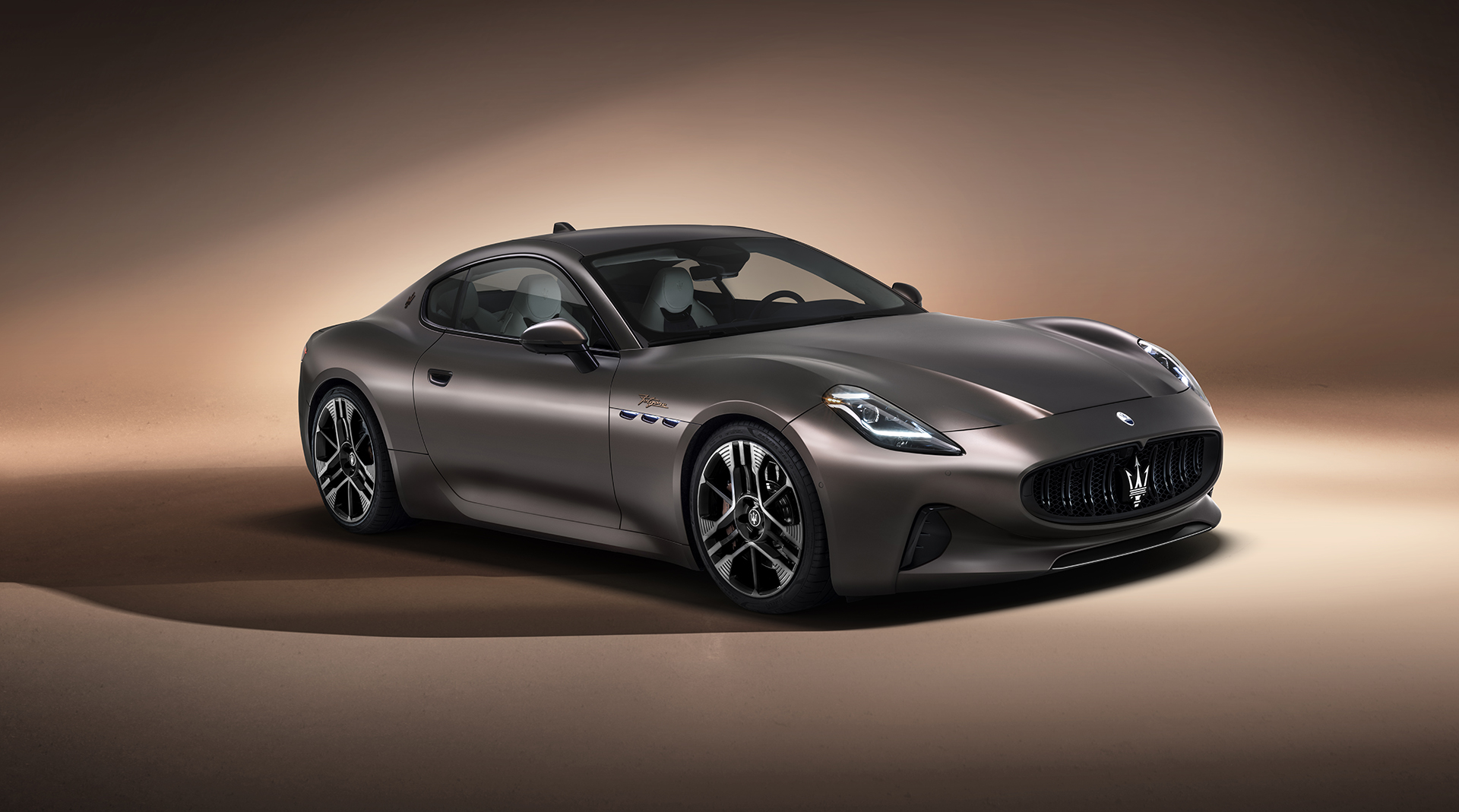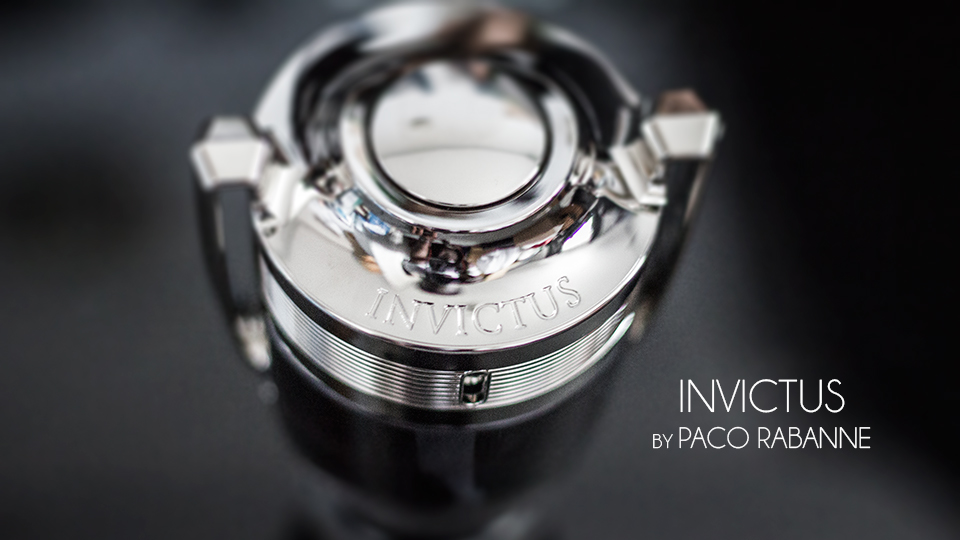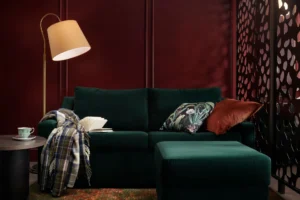Ladbroke Hall is hosting three powerhouses of the arts presented by The Carpenters Workshop between October ’25 and February ’26.
Rick Owens, Joep Van Lieshout and Thibault Hazelzet have decked the historic West London Hall with their primal aesthetic delicacies.
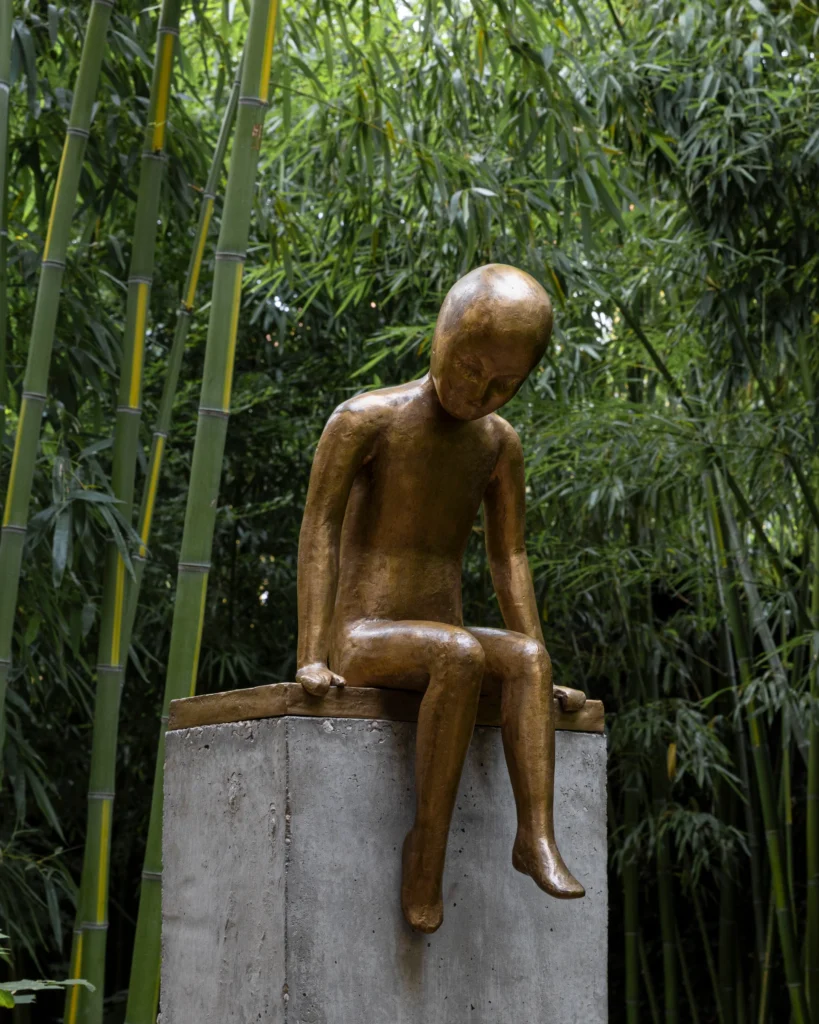
Rick Owens — Rust Never Sleeps
Rick Owens and his wife/business partner/gypsy gothic muse Michele Lamy explore the idea that “in rust there is not ruin, but renewal”. The exhibition’s title is a nod to Neil Young’s 1979 album of the same name and reinterprets decay as a form of artistic endurance and resistance; a necessary and beautiful aspect of evolution.

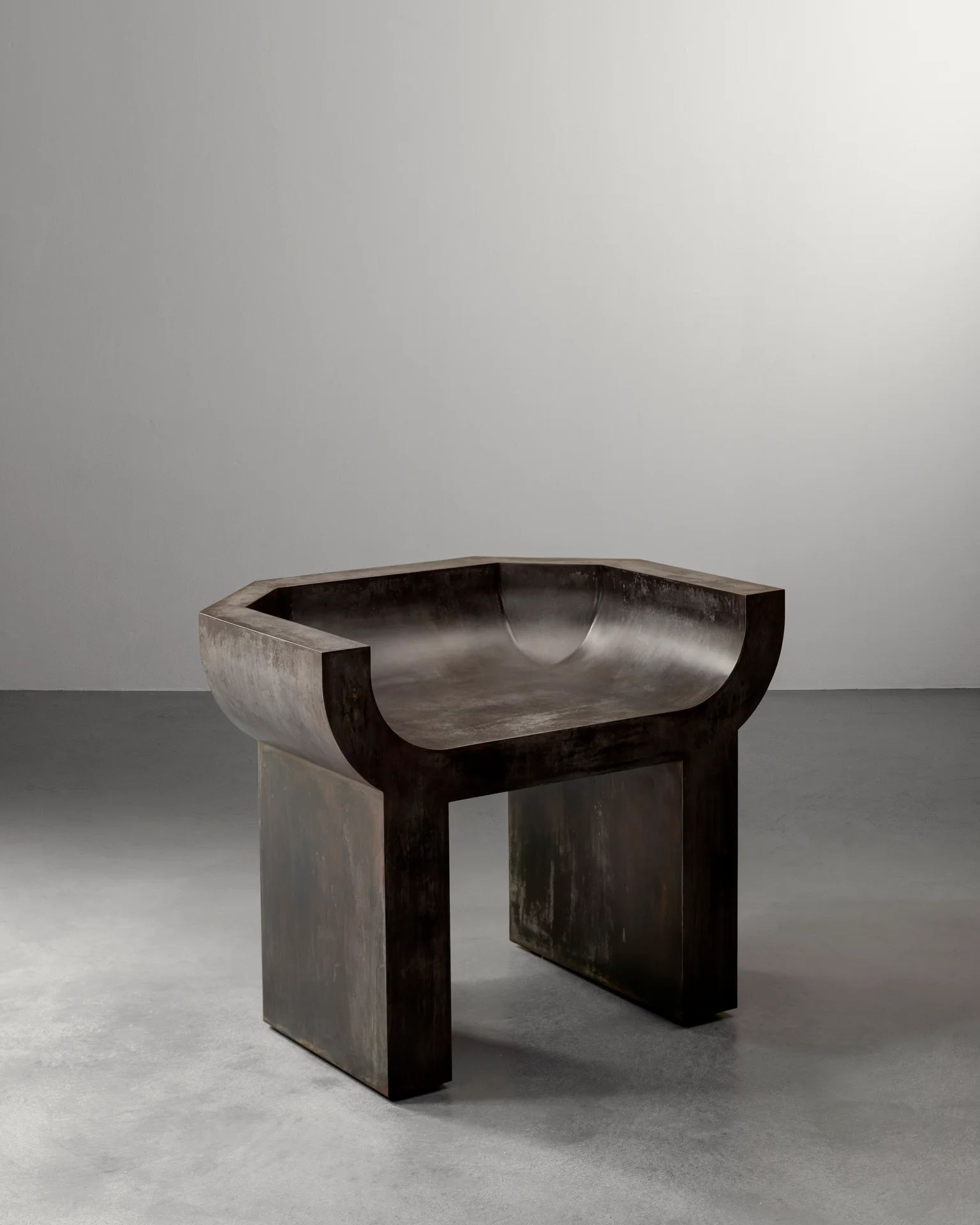
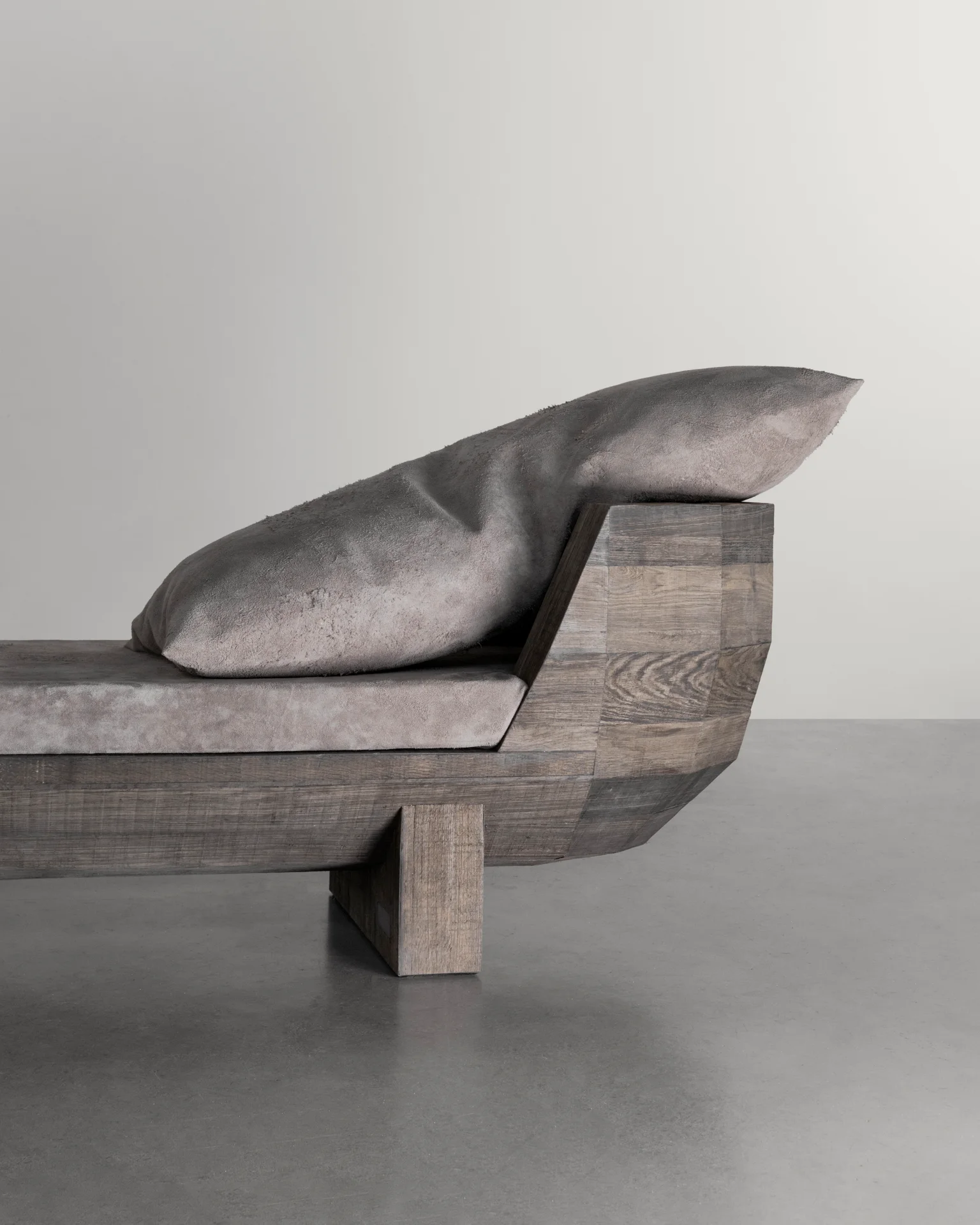
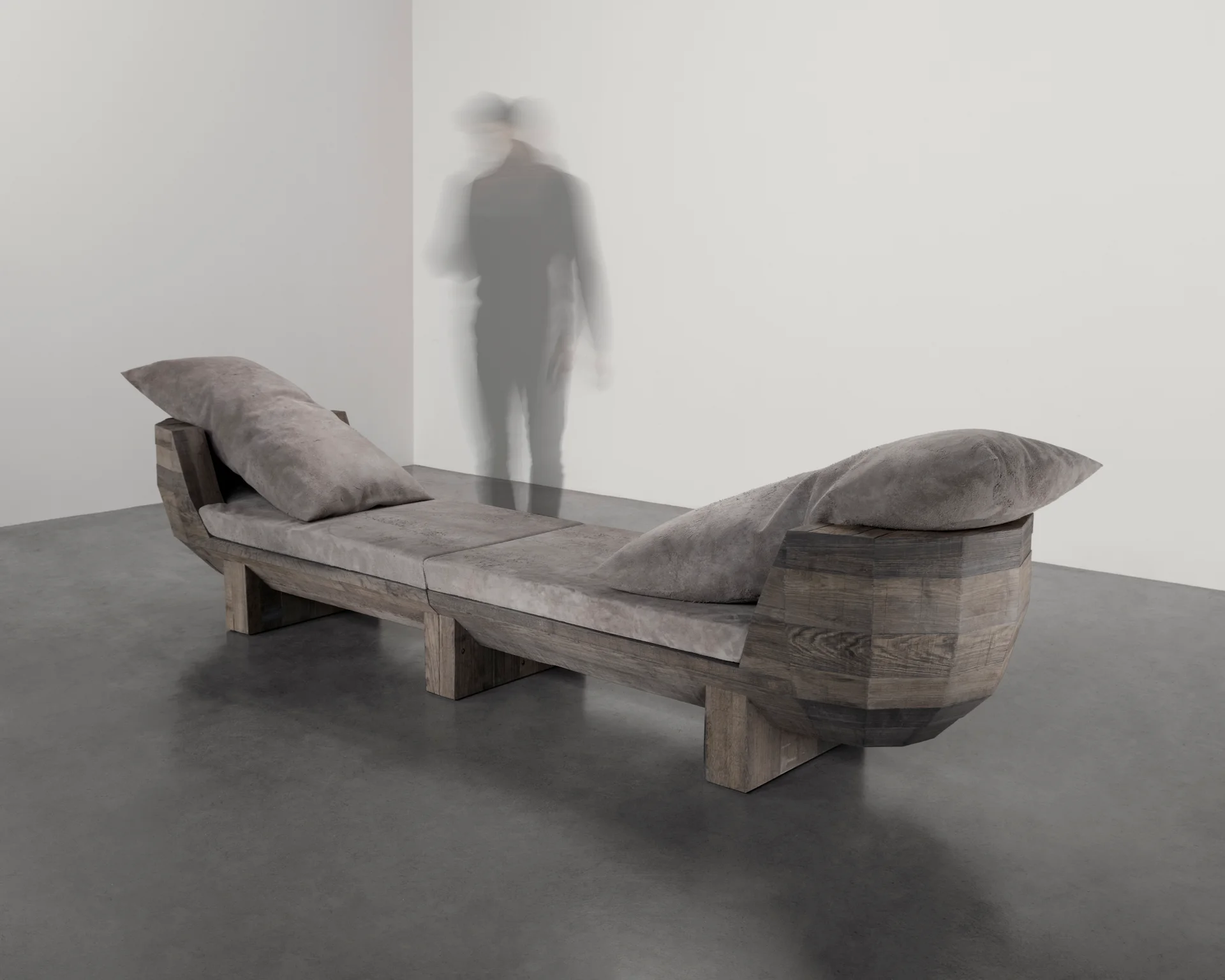
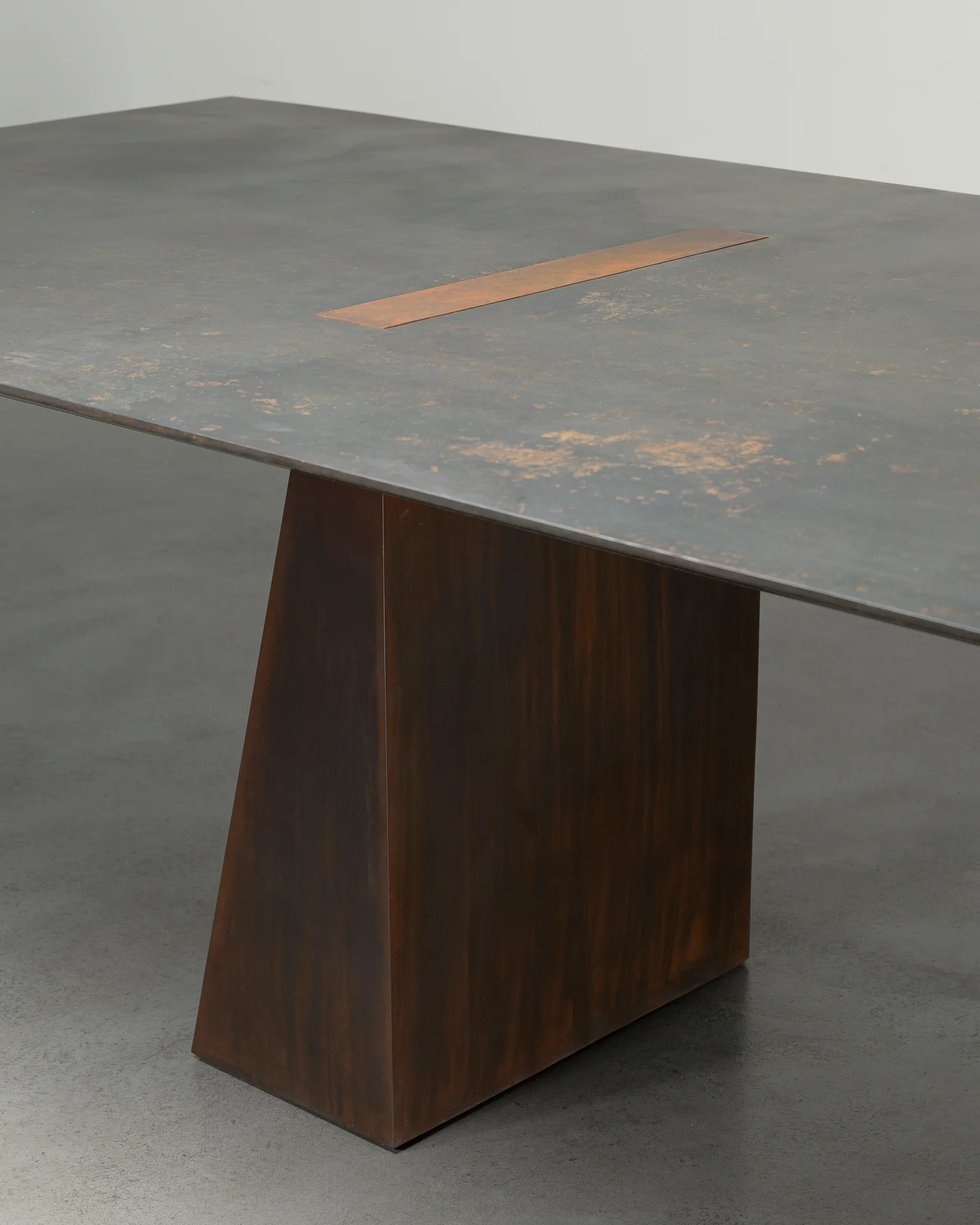
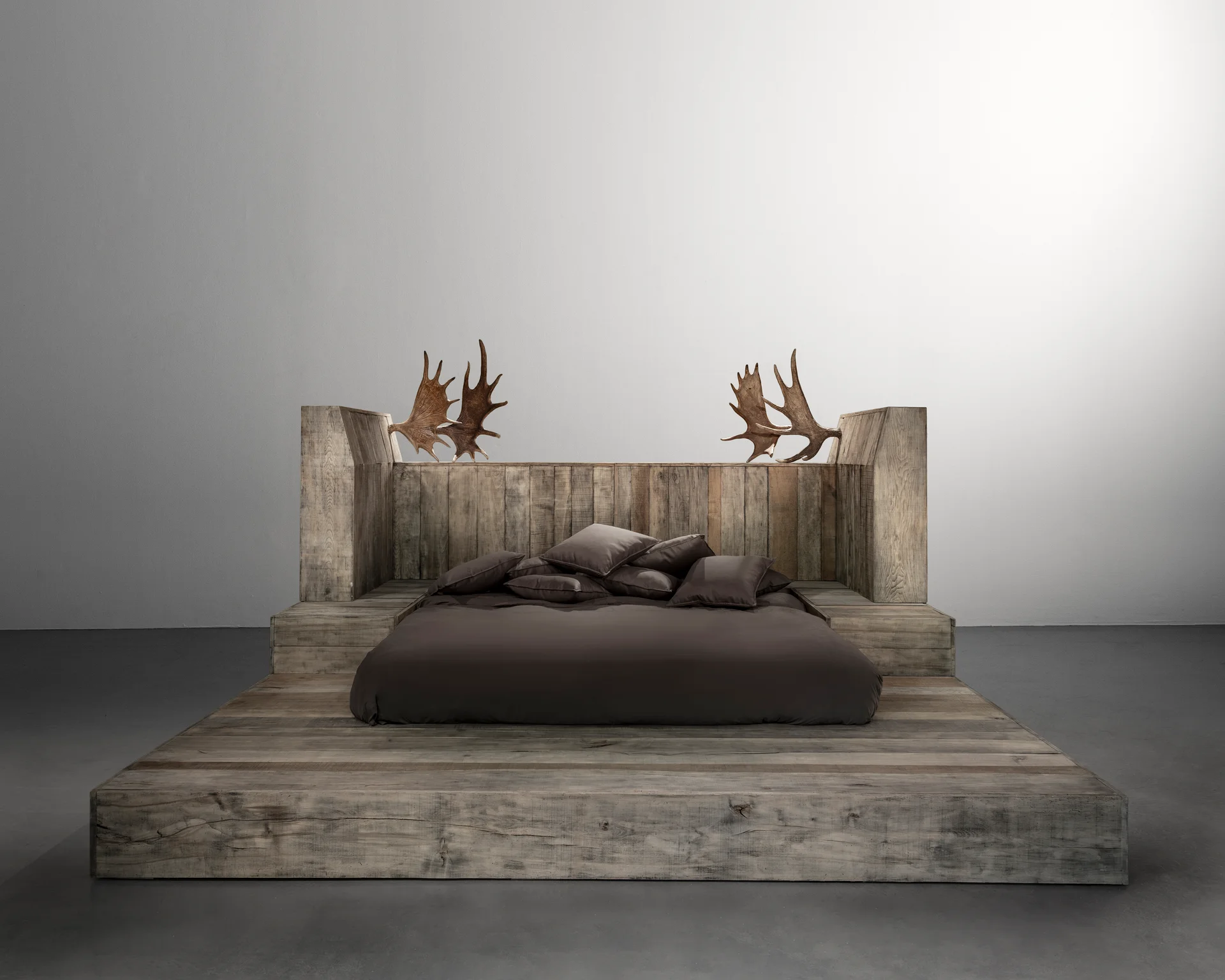
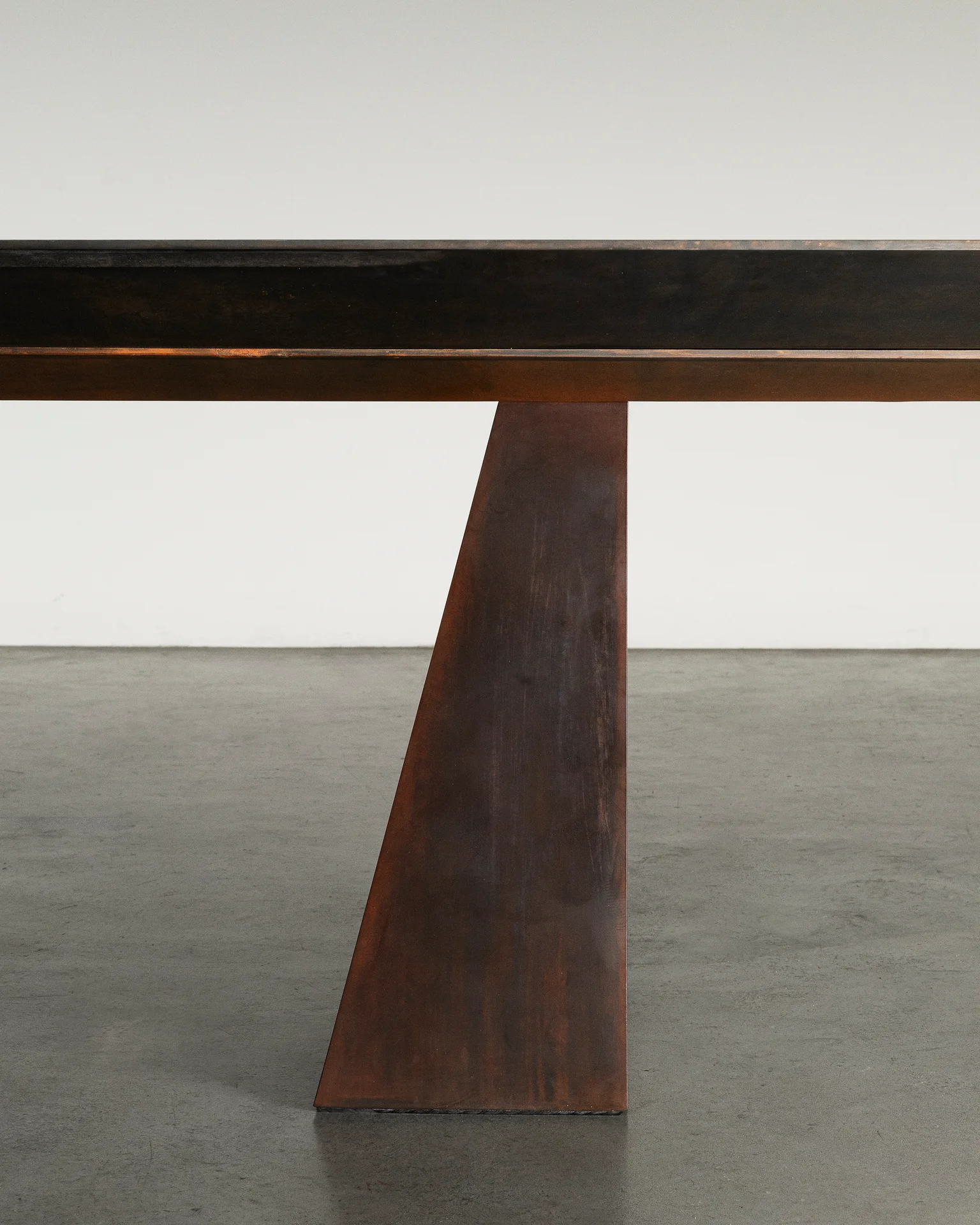
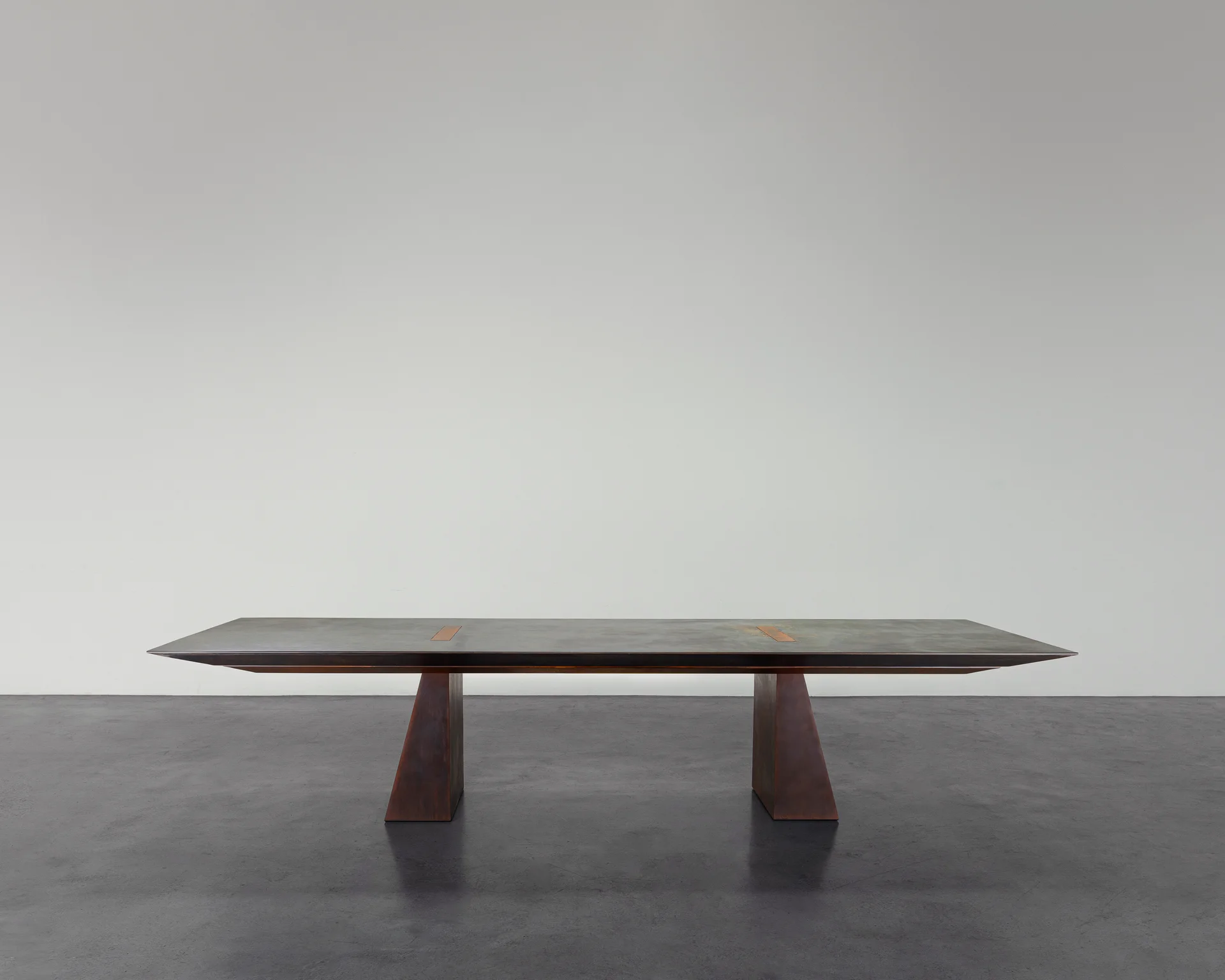
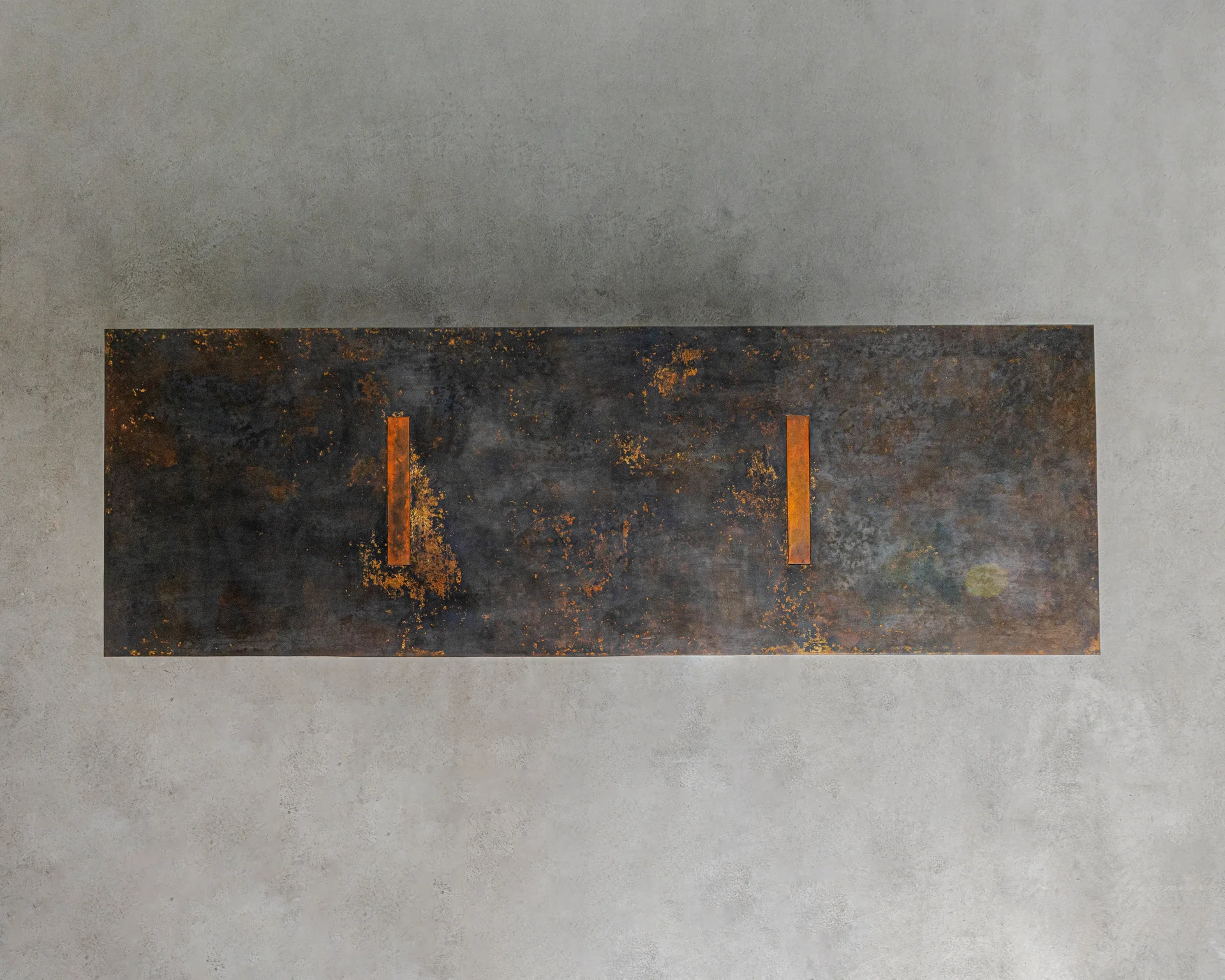
A mountain of antlers greets you as you walk into the space. It is a harsh introduction, a harshness that invites contrast in the form of the self-explanatory Antler Bed (2025) and Double Bubble (2025) – a crocodile leather single file sofa that forces loungers into a kind of relaxed face-off. Crocodiles lay in total stillness for hours when they hunt. They have barely evolved in thousands of years, and yet they are lethality personified. Form, function, purpose. It is a stark image: two people reclining, perhaps sat on their phones atop the skin of these ancient killing machines. A powerful dyadic thread Owens and Lamy repeatedly invoke in Rust Never Sleeps.
Primal, raw materials, including recycled elm wood, rusted steel, bronze and leather are applied to these objects of comfort. Rusted patinas are embraced as a reminder that the journey to dominance and security is ugly, violent and, in turns, quite beautiful.
Atelier Van Lieshout — Bad Ideas for Good Living
Both book and exhibition, Bad Ideas for Good Living embodies Joep Van Lieshout’s radical thought experiments on alternative ways of life through art and design. The project presents functional tools for living differently using so-called “bad ideas” to question what defines a “good life,” while provoking reflection on sustainability, freedom, and utopia.
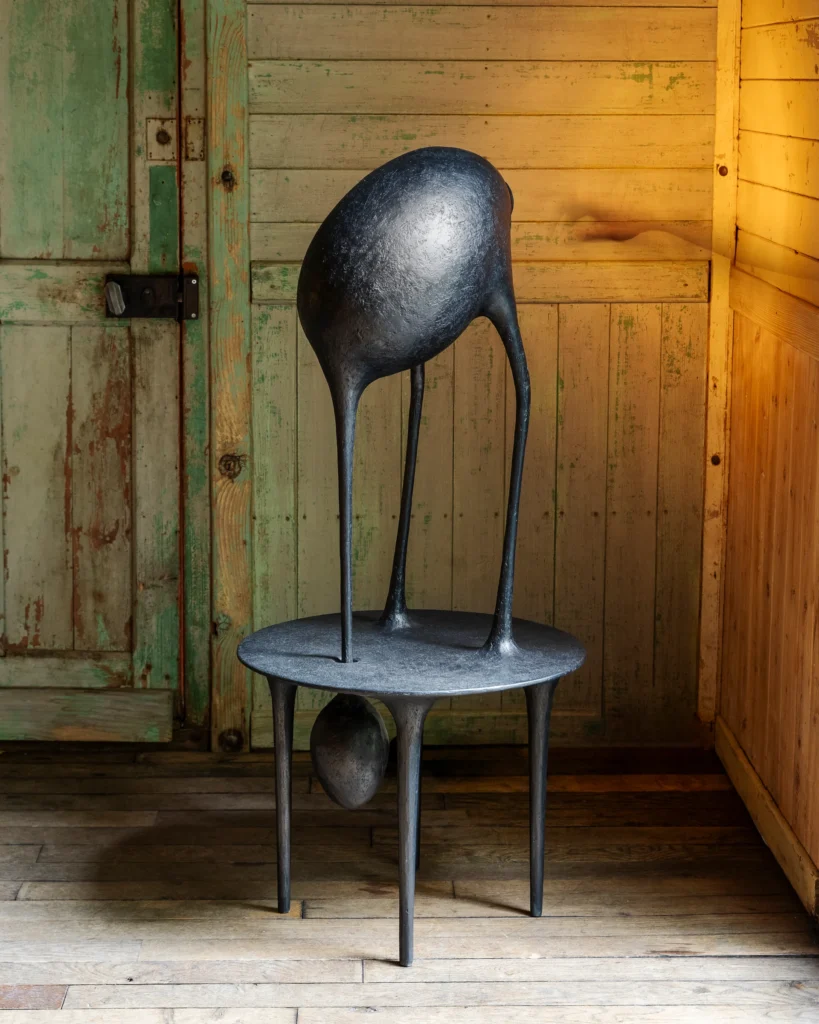
Echoing the origins of Atelier Van Lieshout itself, the exhibition draws parallels between humanity and the broader living world – our shared instincts to survive, adapt, and dominate. Spanning multiple sites, including the Prouvé House and Ladbroke Hall’s gardens, the presentation becomes a self-portrait of the studio’s primal nature and enduring quest for a better world and questions whether utopia is even attainable.
“Utopia is a goal, not an end,” Van Lieshout tells us. “Everyone wants to have it but nobody can get it. Having it is very boring, you need friction. You need the bad people, the crazy, people, the stupid, the intelligent – The Good, The Bad and The Ugly. This is my utopia.”
Building on The Voyage: A March to Utopia (Art Basel Unlimited, 2025), this new iteration continues Van Lieshout’s fascination with human drives, invention, and imagined futures. From mobile dwellings to biogas installations, each work explores freedom and self-sufficiency; migratory birds roaming the planet. For decades, Atelier Van Lieshout has held an unflinching mirror to society, confronting rather than flattering it. Works such as the infamous Domestikator epitomise Van Lieshout’s provocative examination of humanity’s impulse to domesticate and dominate.
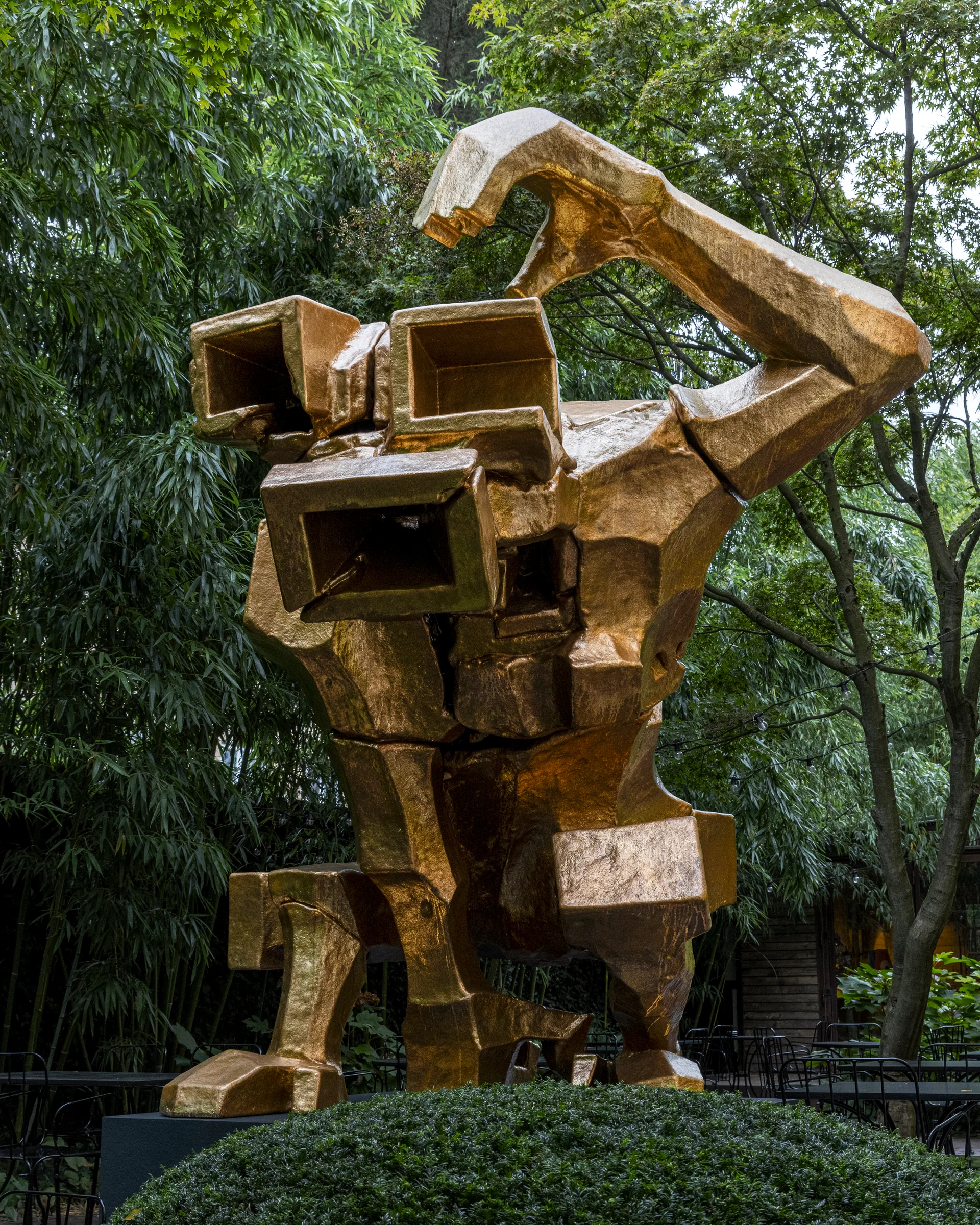

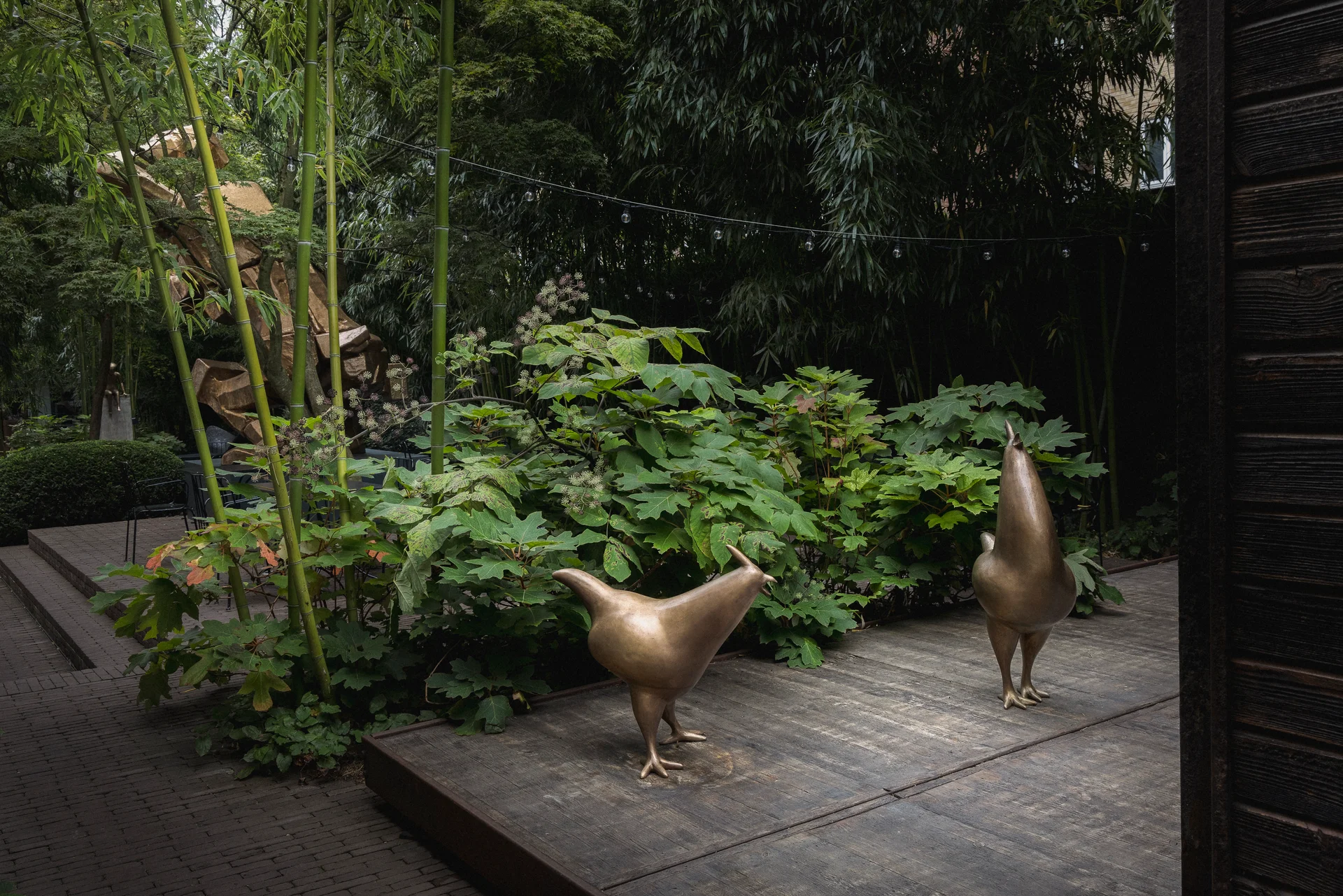
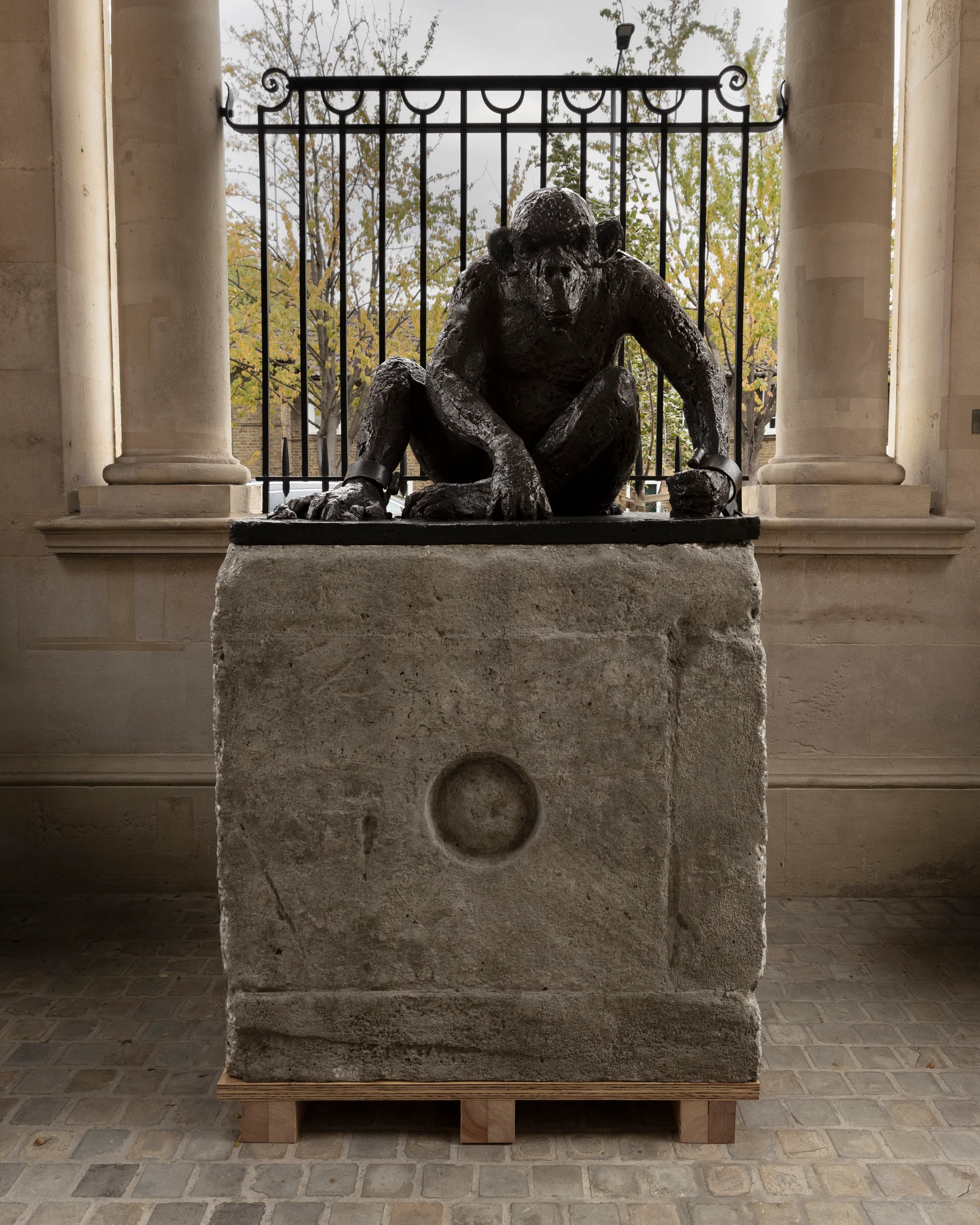
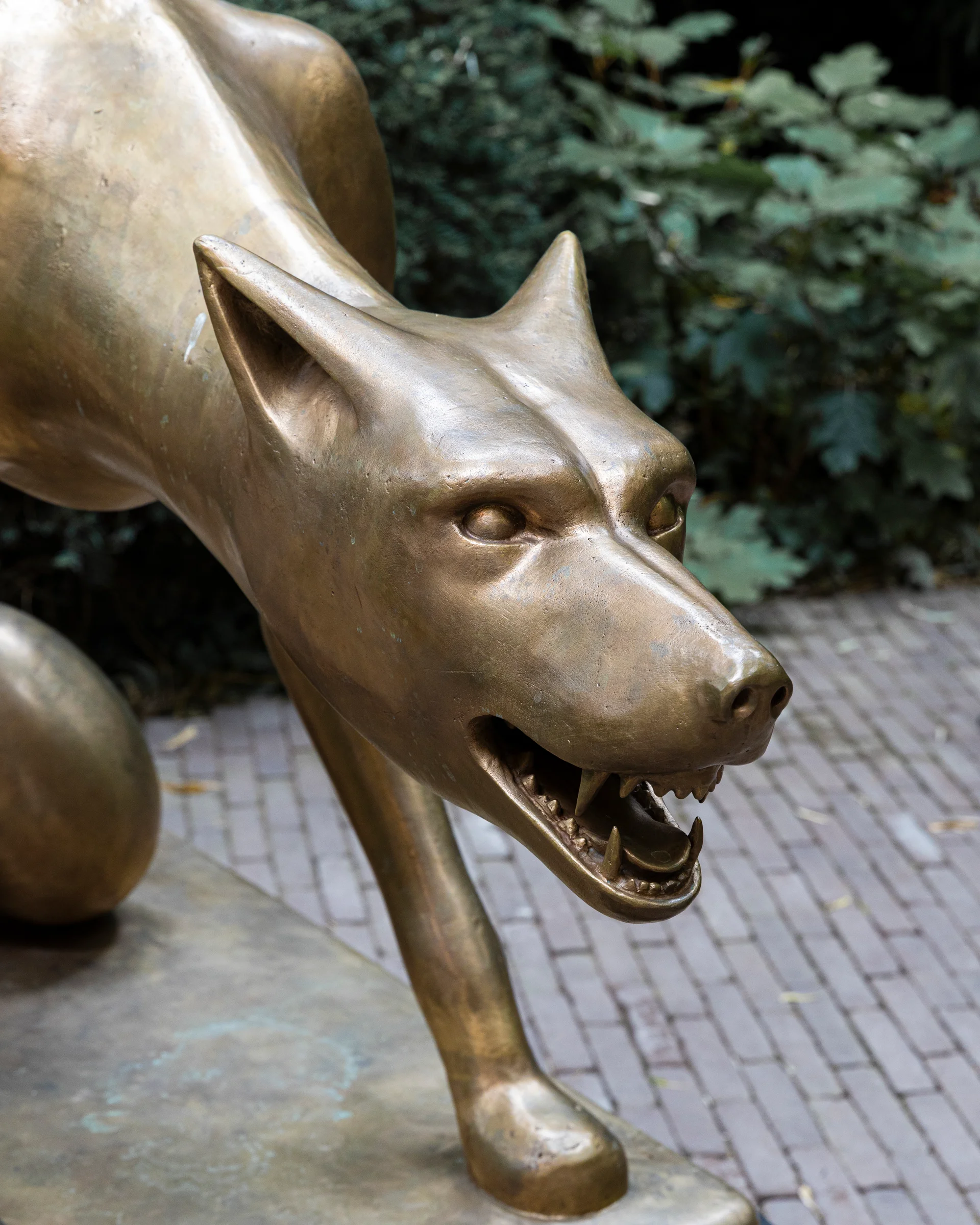
“In my work there are a lot of contradictions,” Joep Van Lieshout tells us. “I like to create this combination between these dark objects and a beautiful bird as a symbol for how we humans try to control the world. This is our culture – from the first moment when we found the club to industrial revolution, transport, medicine and now AI.”
We have this propensity to control and dominate; to create systems that are both progressive and oppressive. Our evolution has brought about a departure from what is “natural” and so these concepts seem contradictory. Yet this progress is rooted in a primal urge to survive and thrive. All of these inventions have had a huge effect on the natural world – the very life source we set out to propagate – and it has taken much friction to inspire such progress.
The accompanying publication, Bad Ideas for Good Living, extends these explorations in print. The book is structured like a home – 16 chapters, each pertaining to a room a corresponding functional object Van Lieshout has made.
“The home is interesting because it is the closest world around us. The only thing which is closer is your own body. The house – how we live in the house, what we do in the house, how we keep the house – comes very close the essence of what we are.”
This concept links to the natural world in the way we domesticate animals. And the ones we cannot domesticate, we apply characteristics. The cheeky monkey, the antagonist wolf, the wily fox. We domesticate them using narratives and link them to humanity’s journey. At the heart of the Bad Ideas for Good Living exhibition, Brutalist Monkey looms large and stylised, symbolising the dawn of humankind while fusing evolution with modernist ideals. Nearby, Strong, Predatory, and Wise – an eagle, vulture, and owl – form a totemic triptych reflecting our instinctive drives to survive and control.
Through functional sculptures, architectural experiments, and ecological projects like the anarchic free state of AVL-Ville, Atelier Van Lieshout continues to merge technological necessity with imagination. Together, the book and exhibition affirm that, despite the sacrifice involved, the need to dominate, to have control of the world and make it “home” endures.
Thibault Hazelzet — Comme un Meteor
Hazelzet’s work is characterised by what he calls “delicate brutalism”. The exhibition features jewellery inspired by 19th century wax cameos that Hazelzet found as a child in a book belonging to his parents. Reproducing the images imprinted on these cameos, the designer casts jewellery pieces featuring scenes and figures from art history and classical mythology. Instead of being set in the metal, the stones are incorporated in the wax casting and embedded in the piece.

Among the exhibited jewellery is a new set of chain necklaces with detachable pendants, which can also be worn as belts. These sit alongside a vast collection of rings, cuffs and bracelets produced over the past three years. Hazelzet uses meteorites and diamonds to produce visionary jewellery works that feature a strikingly contemporary visual language while also appearing steeped in history. Wearable art is something but this is wearable history, wrought with materials millions of years old, hailing from billions of miles away.
Marking his first foray into sculptural functional art works, Hazelzet presents the new Chaise d’École Inconfortable, crafted from cast aluminium. With a rough, unfinished look to its surfaces and a form that appears precariously composed, the work questions notions of comfort – the cost of it. The fragile air of the piece contrasts with the solidity of the Ceramic Sculpture triptych, in which cuboid blocks are arranged to convey weight, strength and support and used to display jewellery.
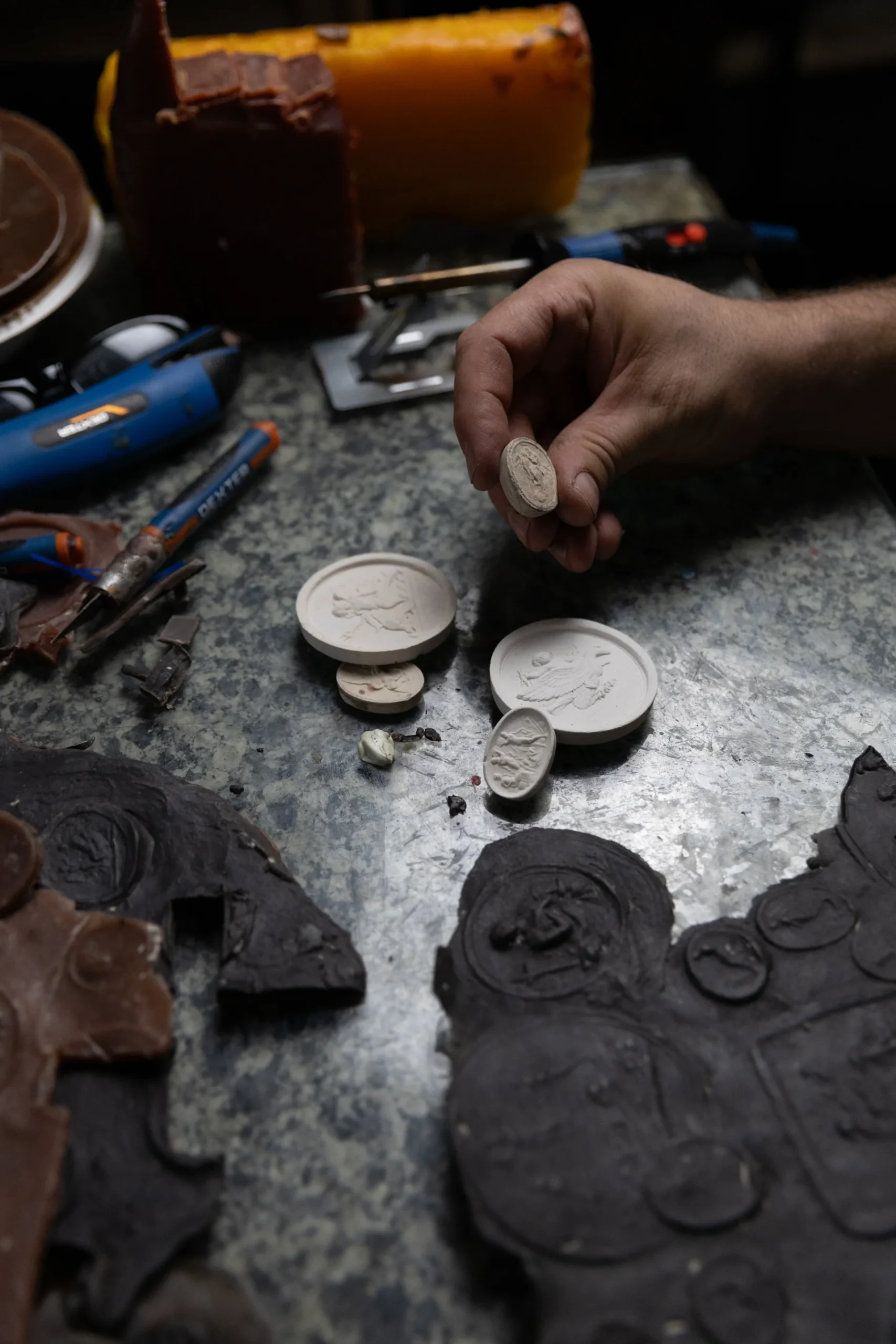
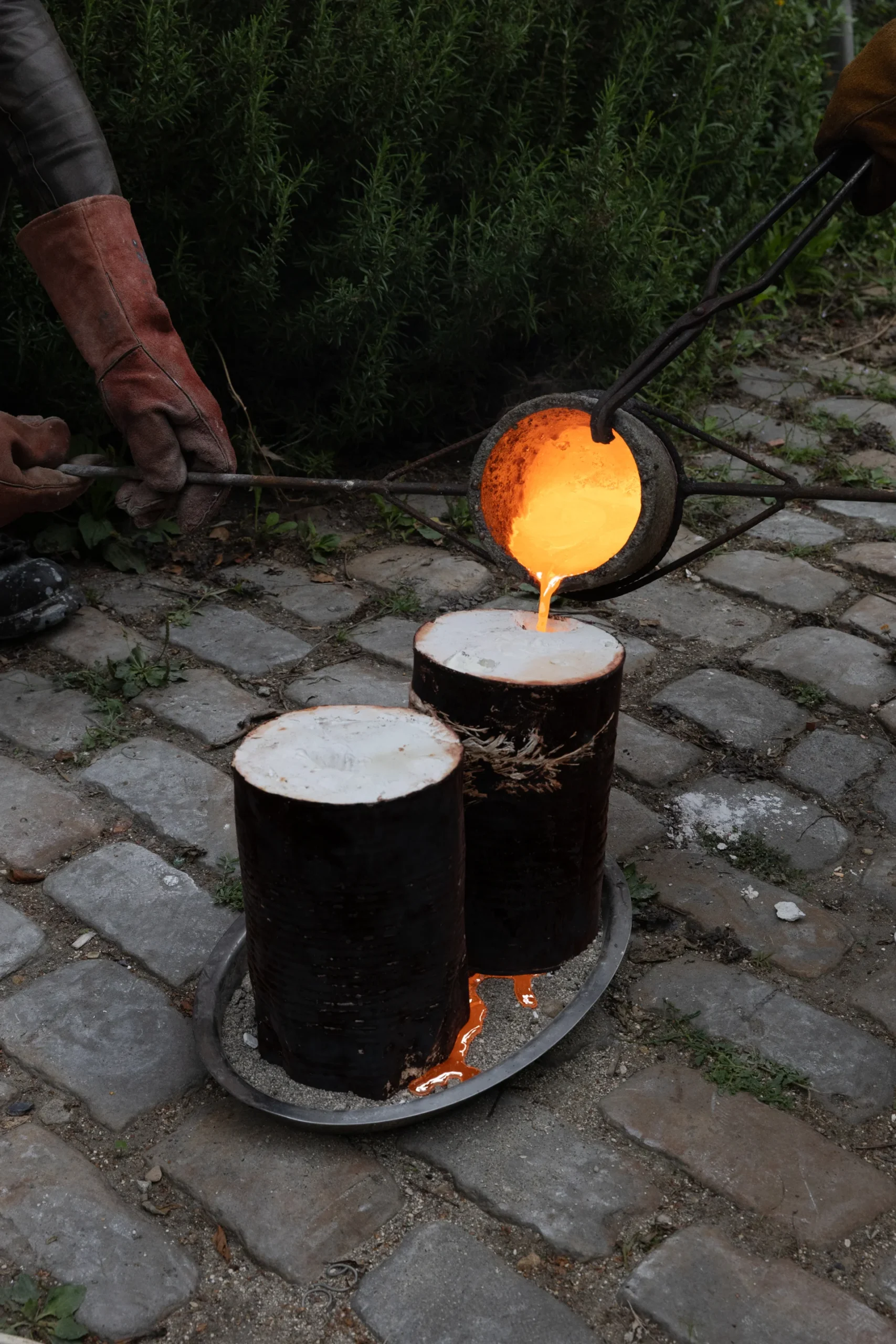
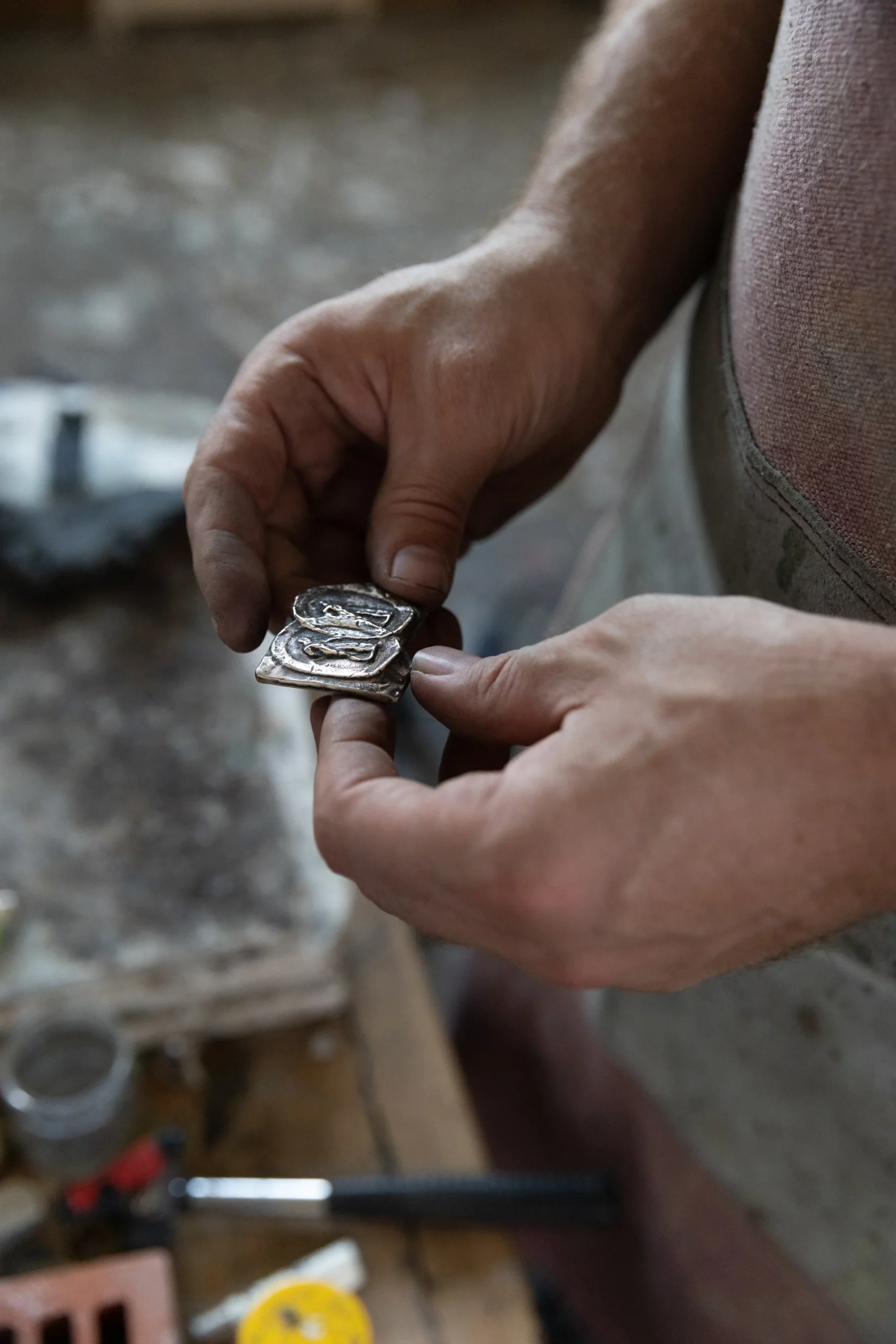
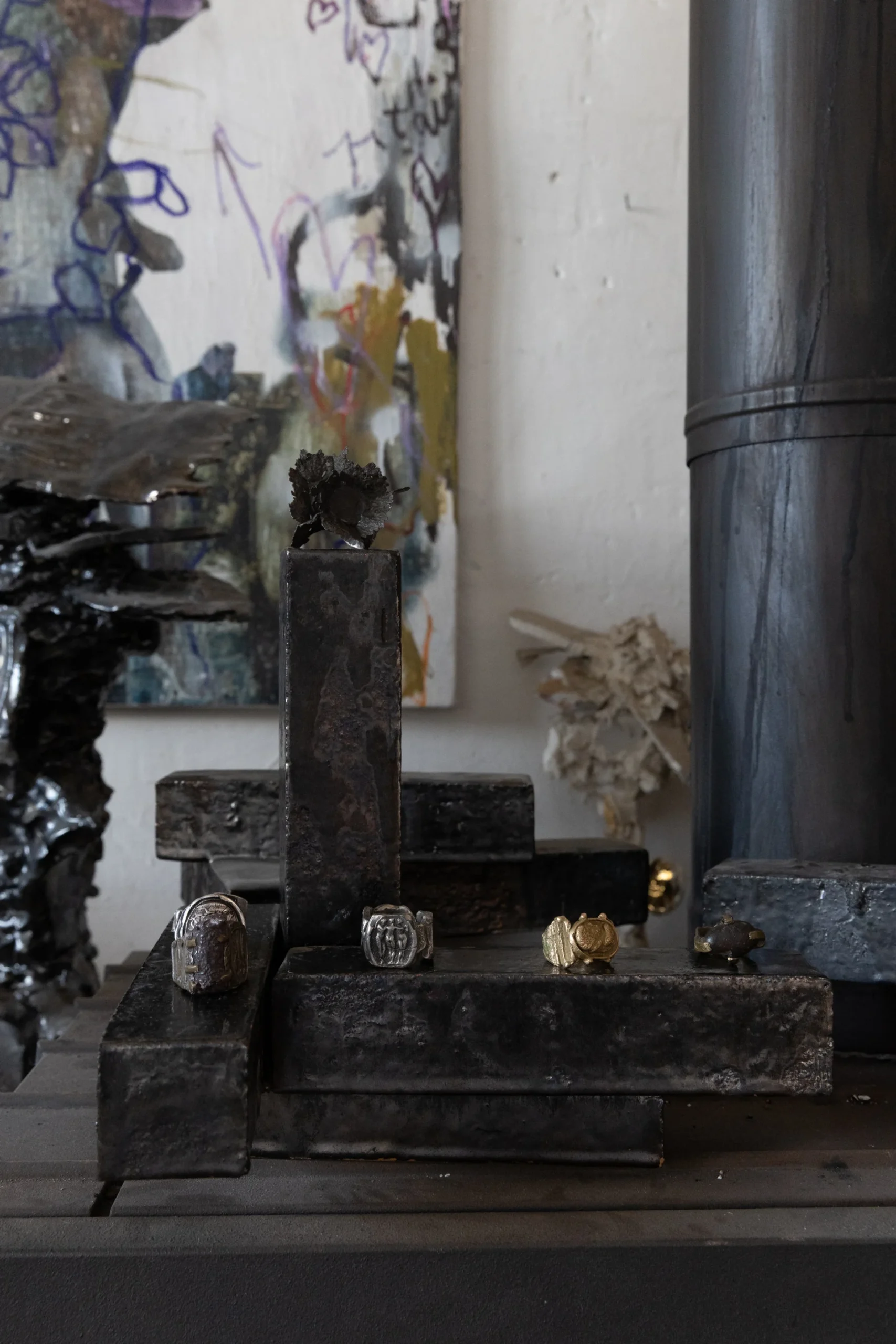
These exhibitions take on some enormous themes, drawn from each respective artist’s vast creative wellspring. In their enormity however, common, primordial threads emerge. The rawness of the materials used speaks to the imperfections humanity harnesses to carve its way through an ever-changing, ever-challenging universe. There are contrasts here that aren’t contrasts at all: Owens wrestling a bed from ancient wood and animal horns; Lieshout’s Technocrat Coffee Table; Hazelzet’s raw geological finery. It is humanity’s inexorable battle with the natural world, sometimes a synchronous ballet, others total ecological destruction.
This constant quest for better versions of survival, maddeningly, can poison the very earth we live call home. Despite being aesthetically rough and loud, these collections seem to humble themselves to the fact that we are animals too – violent, soft, clumsy apes that are ahead of the curve in so many ways but also nothing without our primal roots. Humanity is supposedly the domineering force on this planet, so why do we constantly look to the natural world for inspiration? Why are we so physically feeble when naked to the elements compared to other animals, and so destructive with all our technological superiority? In these pieces, the artists present freedom, comfort, power through the divinity of the natural world and the inevitable sacrifice that comes with our unique participation in it.
